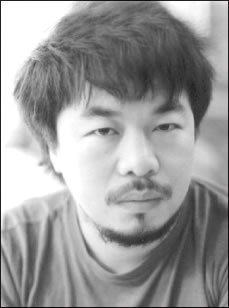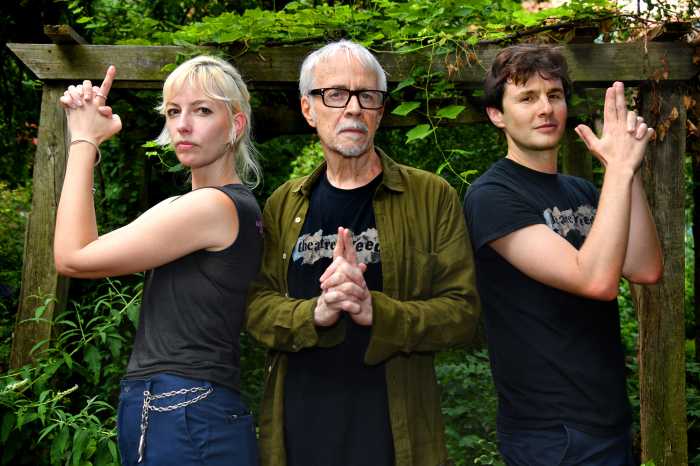By Clayton Patterson
In dealing with the problem of the so-called Boris Lurie Art Foundation — which, through the use of trickery and the misuse of trademark laws, is attempting to steal the NO!art movement’s name and distort its history against the wishes of one of its original owners, Boris Lurie — the typical solution would be to address the matter in court.
I am somewhat familiar with the courts because, since 1988, I have been involved in numerous court cases. Over the years, I have sometimes defended myself in court, and also been defended by many well-known radical lawyers — Lynne Stewart, Alton Maddox, William Kunstler, Ron Kuby, Stanley Cohen, David Rankin — and had the good fortune to get represented by a couple of brilliant Legal Aid lawyers, including Sarah Jones, granddaughter of a U.S. president.
Another group critical to my defense were photographers sympathetic to the anti-gentrification struggle. I have had the privilege of having my arrests and public statements documented by some of the best photographers and video-makers connected to the anti-corporate and big money takeover in New York City: John Penley, Q. Sakamaki, Elsa Rensaa and Ai Weiwei.
In the NO!art attack I was not yet ready for a lawyer. But a unique, intelligent tactic was presented to me in the form of a letter from the German NO!artists Detlev Hjuler and Mama Baer. They had already consulted a lawyer and developed a letter defending the history of the use of the NO!art name.
The Boris Lurie Art Foundation is made up of four partners with plenty of money and access to power. None is an artist or has any standing with or connection to the NO!art movement. Their only motivation is to carpetbag Boris Lurie’s $80 million estate.
I reached out to Alan Kaufman in San Francisco, who has a substantial list of literary work he’s published, including one of my articles in a book. Then there was Alan Moore, with whom I’ve worked on a few publishing projects. (I recently gave him some support material for the defense of a squat in Hamburg.) Another person I contacted was Leonid Penchevsky, a former leader of the radical Russian/American art movement with the ironic, tongue-in-cheek name Art Party Pravda.
I contacted Ami Goldman in Tel Aviv, a filmmaker I introduced to the books of Boris, which then inspired him to make the movie “NO!art Man.” PEN, of which I am a member, the international writers’ organization formed to defend free expression, was on my e-mail list.
Then I included Ai Weiwei in Beijing, China.
From a conservative point of view, this e-mail group could be seen as a radical list of warriors for a better democratic society. But it is my last connection that has caused me some serious consternation: Ai Weiwei.
Recently, I reconnected with Ai Weiwei. I knew Ai Weiwei from the Lower East Side anti-gentrification struggles in the late 1980’s and early ’90’s. He was living on the L.E.S. and photographed the ’88 police riot, as well as the homeless crises. Soon after, he moved back to China. In 2011 he was having a one-man show at the Victoria Albert Museum in London and I had been asked to contribute some of my anti-gentrification videos. Since I had dropped out of the mainstream art world in the early 1980’s, I had no idea that he had become such an internationally recognized artist. Weiwei, a philosopher, artist and architect, collaborated on such projects as the Bird’s Nest stadium for the Beijing Olympics.
He wanted me to send him a copy of the movie “Captured.” “Captured” was directed by Ben Solomon and Dan Levin and edited by Jenner Furst and produced by Blowback Productions. It’s a movie about the building of the Clayton archive that Elsa and I created. So far, the movie has been subtitled in French and German, and I was now hoping for the Chinese version. Weiwei said he could add Chinese subtitles.
What worries me is that the movie, if watched by a member of a far-right-wing government, could be misunderstood as anti-authoritarian. There are parts of my being arrested, detained and fighting court battles, segments of obvious police misconduct, homeless crises and the exposure of New York City underground creative activities. There is even a photo by Weiwei published in The New York Times. The photo was of me in court holding up my hands with “DUMP KOCH,” our mayor at the time, written on the palms of my hands in heavy black felt maker.
What scares me is that, not long after I included Weiwei in Beijing on my e-mail tree, my connection to him became more sporadic.
Then on my way to Vienna to work at the Wildstyle and Tattoo Messe, to screen “Captured” and to show photographs, as I was wandering the Hudson News bookstore, screaming off the first page of the Financial Times was a photo of Weiwei. He had been on his way to Hong Kong. At the Beijing airport he was detained, arrested, then disappeared. The Chinese authorities confiscated all of his computers, digital archives and other ephemera related to his work. Obviously, it was not “Captured” that caused his arrest, but its inclusion with other works challenging the Communist one-party system, and my including him in group e-mails with all the people on my list — these would not have helped him.
My fear is “Captured” and the e-mails questioning the theft of the NO!art name by eminent members of democratic society could seem quite revolutionary to the close-minded, anti-democratic, anti-free speech, anti-individual thinking in the Chinese government. Challenges of the privileged social elite may be viewed as a threat to their system.
A part of “Captured” touches on one of my more public arrests, a hunger strike, and the massive amount of coverage this led to in the news. I was able to win my freedom, as well as to maintain the rights to my creative property. My 3-hour-33-minute videotape came to be known as the “Tompkins Square Park Police Riot Tape.”
I am asking people to follow Weiwei’s imprisonment and to write letters to the Chinese Consulate on his behalf. And I am hoping to get some wider support for our struggle against the attempted theft of the intellectual property and copy-written material connected to NO!art.
Edited by Monica Uszerowicz





































